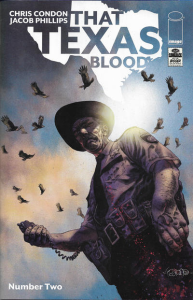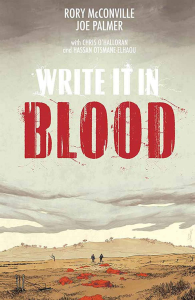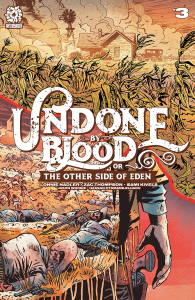As I’ve been catching up with crime comics from the past year or so, one thing that struck me is the fact that Texas is currently one of the main recurring settings in the genre.
This may be partly due to the obvious echoes of one of crime fiction’s closest relatives: the western. Comics have certainly benefitted from this resonance, which lends gravitas and a sense of larger history to many a scenario. I still haven’t managed to get my hands on the graphic novel Meadowlark: A Coming-of-Age Crime Story, so I don’t know if it plays much of a role there, but at least the connection to westerns is particularly explicit in one of the coolest series in recent times, Undone by Blood, co-written by Lonnie Nadler and Zac Thompson.
There is a neat metafictional edge to Undone by Blood. Each volume alternates between a 20th-century tale along classic genre lines (in the first book a revenge yarn, in the second one a heist) and excerpts from a western novel the characters are reading, whose narrative mirrors, inspires, and ultimately departs from the protagonists’ experience. Most issues finish with prose chapters from the book-within-the-book, written in a fun style full of flourishes that sort of mimics old pulp novels (although it is not a full-on pastiche).
There are also illustrated passages that presumably project what the characters are imagining as they read, atmospherically soaked in Jason Wordie’s washed-out palette:
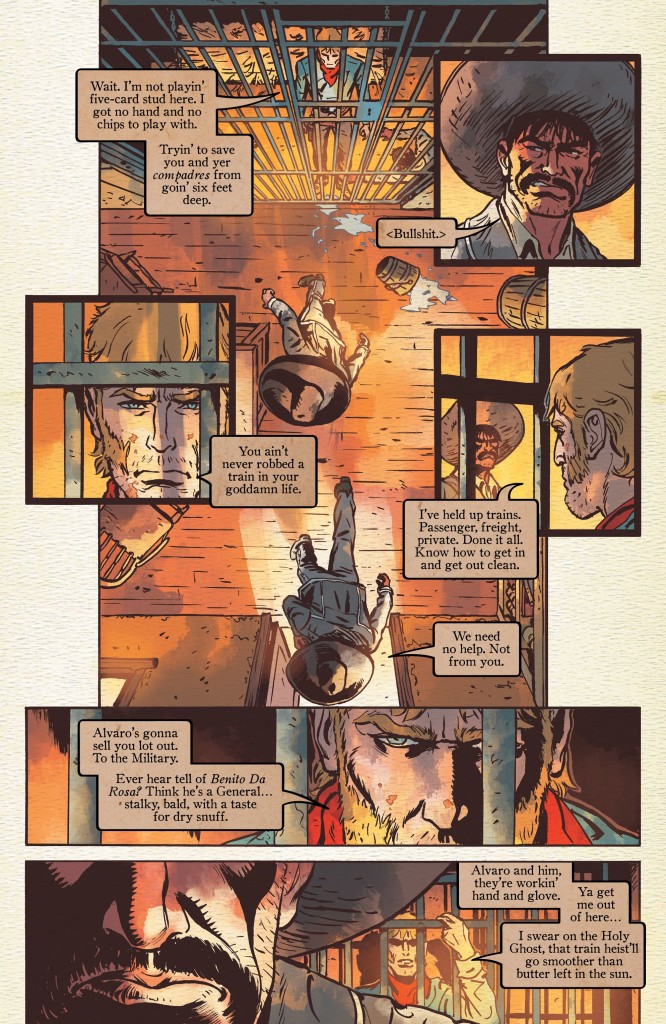 Undone By Blood or The Other Side of Eden #1
Undone By Blood or The Other Side of Eden #1
(Artist Sami Kivelä, to be fair, can do wonders with any script – it was his kickass art that got me through the borderline impenetrable sci-fi romp Beautiful Canvas.)
Thematically, Undone by Blood is an ambiguous project. On the one hand, the ‘real’ stories finish with a revisionist payoff, which would suggest an exploration of the difference between reality and fiction. On the other hand, for the most part both levels read like engaging thrillers, so perhaps the point is that, ironically, revisionist fiction isn’t so different from escapist fiction after all, just a distinct flavor of the same type of entertainment.
The series’ second volume, subtitled The Other Side of Eden, follows a Mexican postman in 1934 Texas, milking the contrast between him and the grotesque Mexican caricatures in the western novel he’s reading (once again starring a gunslinger called Solomon Eaton). The comic gets this poignant subtext out of the way early on, though, and soon moves on to an adrenaline-charged mix of gunfights, chases, and shocking twists. Again, the ‘reality’ is pretty wild, even if it is more downbeat than Solomon Eaton’s world (which is actually pretty grim itself).
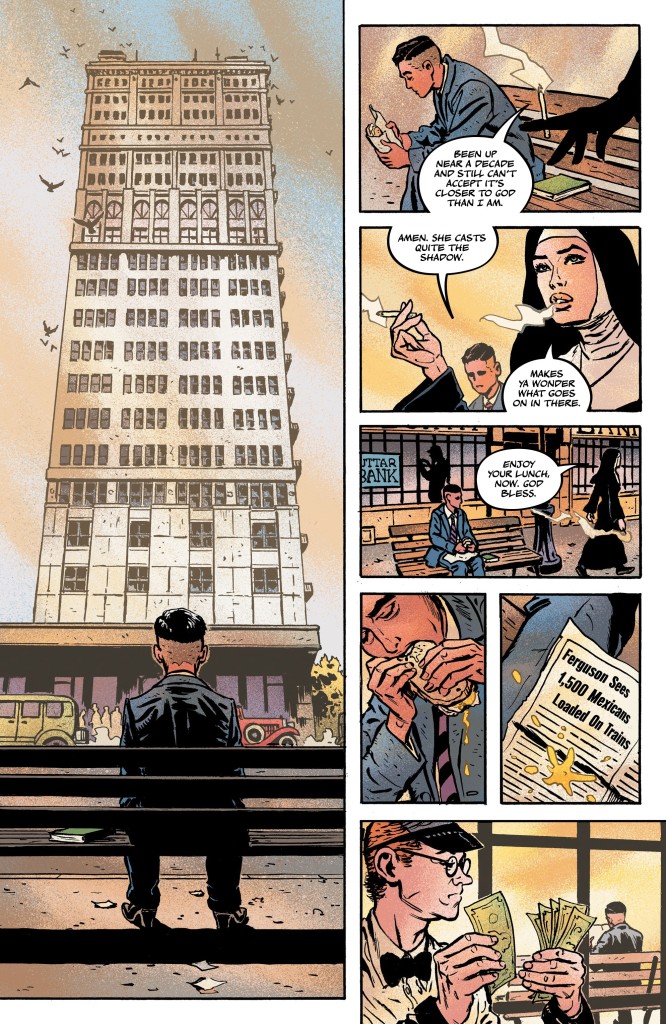 Undone By Blood or The Other Side of Eden #1
Undone By Blood or The Other Side of Eden #1
(You can’t necessarily tell from these scans, but Hassan Otsmane-Elhaou’s inventive lettering and word-balloon placements are a big part of Undone by Blood’s identity as well…)
The other resonance that Texas brings to these narratives is of a very specific branch of crime fiction, namely the type of twisty, sun-soaked thrillers perfected by the Coen brothers in films such as Blood Simple and No Country for Old Men. The Coen influence, for instance, is all over Rory McConville’s and Joe Palmer’s Write It in Blood, about a couple of hitmen driving around with a hostage in their trunk while spouting foul-mouthed repartee and getting chased by different crime families… Sure, the amusing result owes as much to the Coens’ black comedies as to their neo-noirish tales, but it does inhabit the same sort of settings as the abovementioned movies.

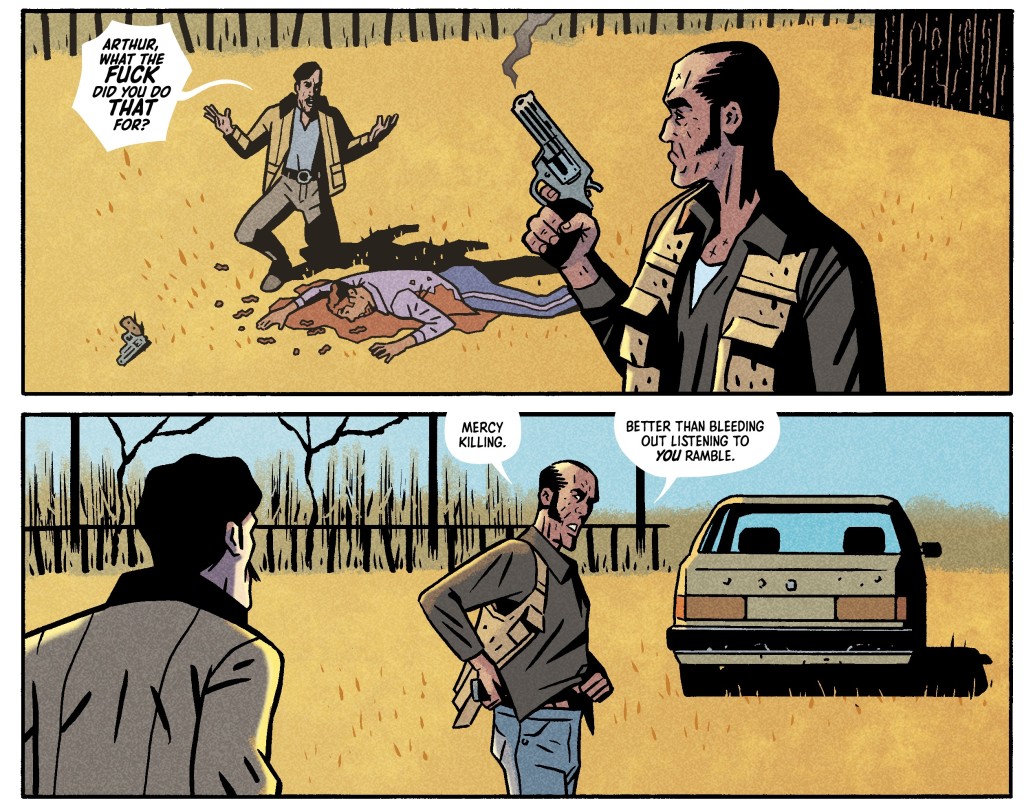 Write It in Blood
Write It in Blood
That said, the work that is most likely to achieve a cult following in the long run is Chris Condon’s and Jacob Phillips’ That Texas Blood, a critically acclaimed ongoing series committed to dissecting the Lone Star State’s peculiar breeds of darkness and evil.
Revolving around the investigations of Joe Bob Coates, an old sheriff haunted by his past, this comic delivers an attentive, authentic-sounding portrayal of small-town Texan life, befittingly rendered with a slow-burn pace, gritty prose, and the kind of unflashy, mature characterization that is typically more associated with novels and ‘quality’ TV. Generally restrained and low-key – if wrapped in folksy dialogue – the attitude towards storytelling in That Texas Blood mirrors the demeanour of its laconic protagonist and the unhurried vibe of rural communities in the titular state, generating quite a tonally coherent reading experience. It’s one of those books I’ll recommend to fans of crime drama anywhere, even when they’re not into comics at all.
Plus, like in Undone by Blood, there are bonus pieces in the backmatter (letters, newspaper clippings, excerpts from official interviews, etc) adding further layers to the world-building. I suppose these extras are meant to mimic pieces of evidence on a case folder, in line with the police procedural subgenre, requiring a different engagement from readers, who are thus invited to search for clues themselves by looking between the lines of scattered material.
Jacob Phillips had already showed up in an earlier ‘Catching up with crime comics’ post as the artist of Newburn. In addition, he’s been coloring recent Brubillips collaborations – including Pulp, Reckless, and the latest arc of Criminal – with incredible results. Between all this and That Texas Blood, Phillips is quickly becoming one of the strongest creators in the field of crime comics, leaving a distinct mark through the thoughtfully diverse layouts he chooses for each scene and through the effective way he uses stark, unnaturalistic color choices to create haunting atmospheres:
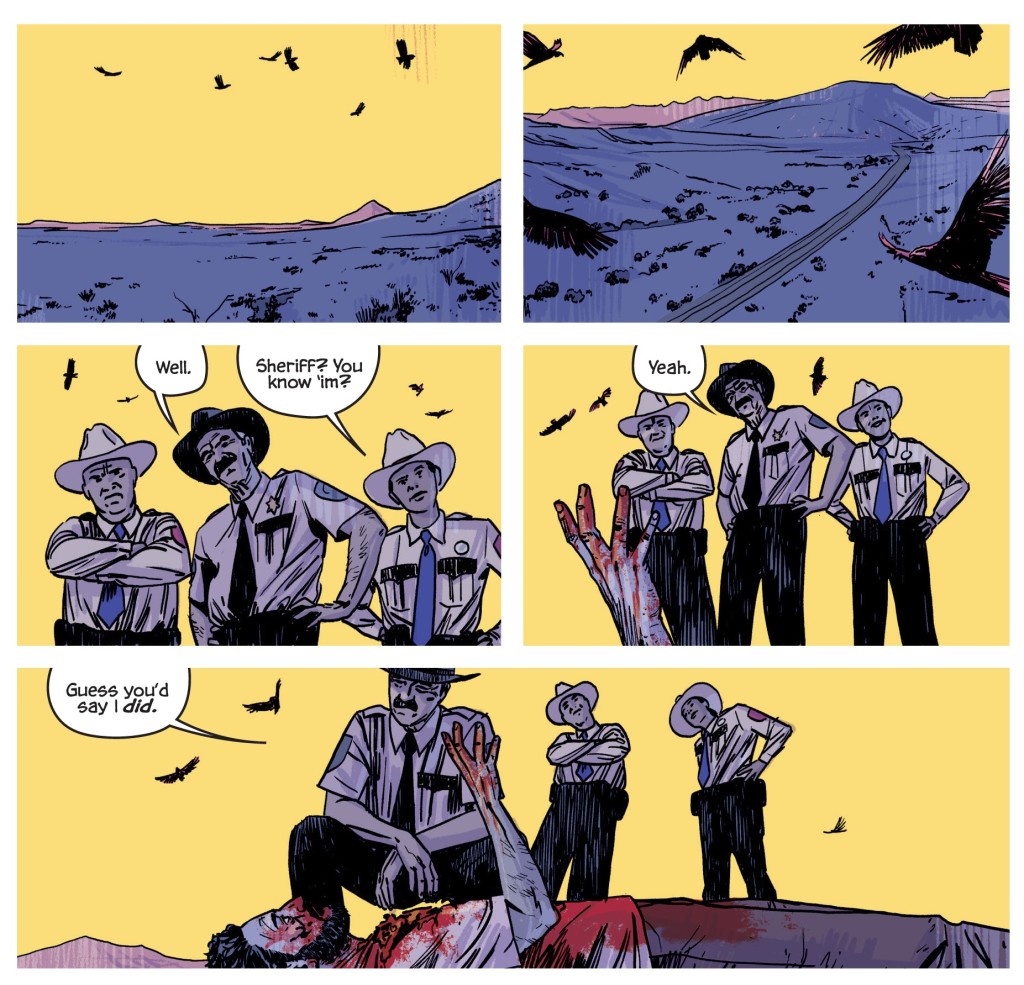 That Texas Blood #2
That Texas Blood #2
That Texas Blood manages to organically flirt with horror without forsaking its crime genre credentials. Notably, in issue #13 – a Christmas Special – a character tells a ghost tale that reads almost like an old EC comic and the latest storyline, ‘The Snow Falls Endlessly in Wonderland,’ has been a chilling tribute to 1980s/90s’ slasher thrillers (it’s also one of the most stunning-looking comics on the stands).
The traces of horror were present from early on, especially in the nightmare sequences, but they became more pronounced with the impressive second big arc, ‘Eversaul, 1981,’ where Sheriff Coates kept flashing back to a series of ritualistic killings forty years ago. Told with Vince Gilligan-esque decompression, this was an eerie mystery that built up tension with such an assured hand that even the clichés came alive as threatening and believable.
And, again, Jacob Phillips pulled out all the stops when it came to depicting Coates’ trips down memory lane, smoothly shifting the art style and colors to suit each mood and era…
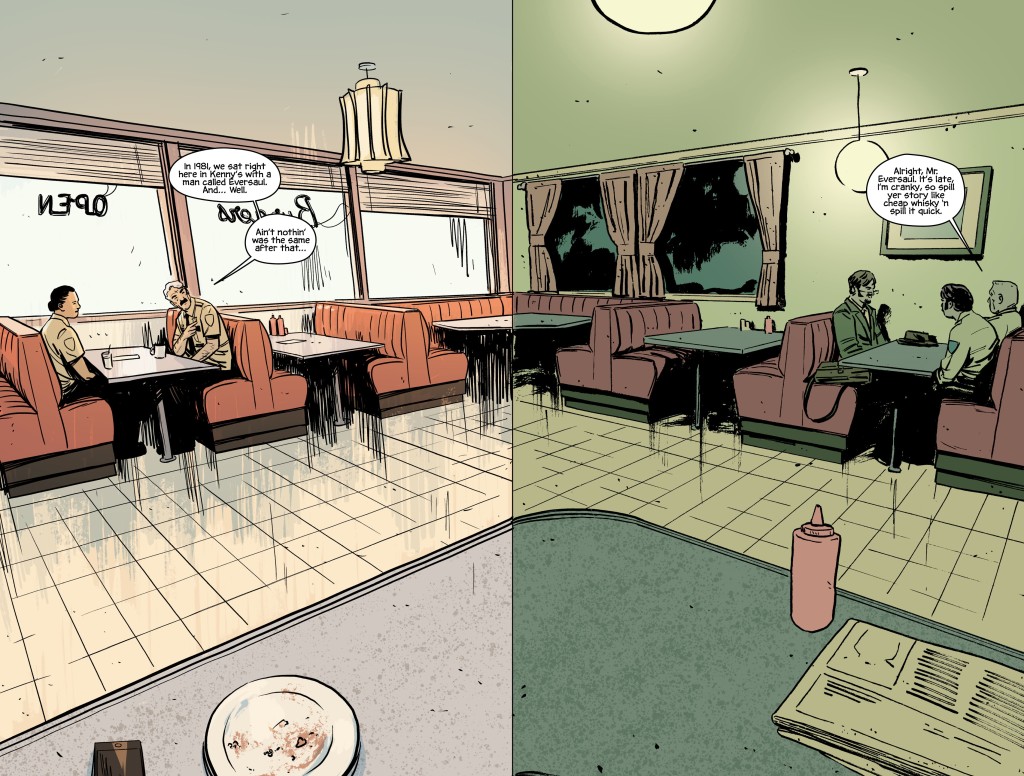 That Texas Blood #8
That Texas Blood #8
That’s all for now. Hope to be back soon with more crime comics!

